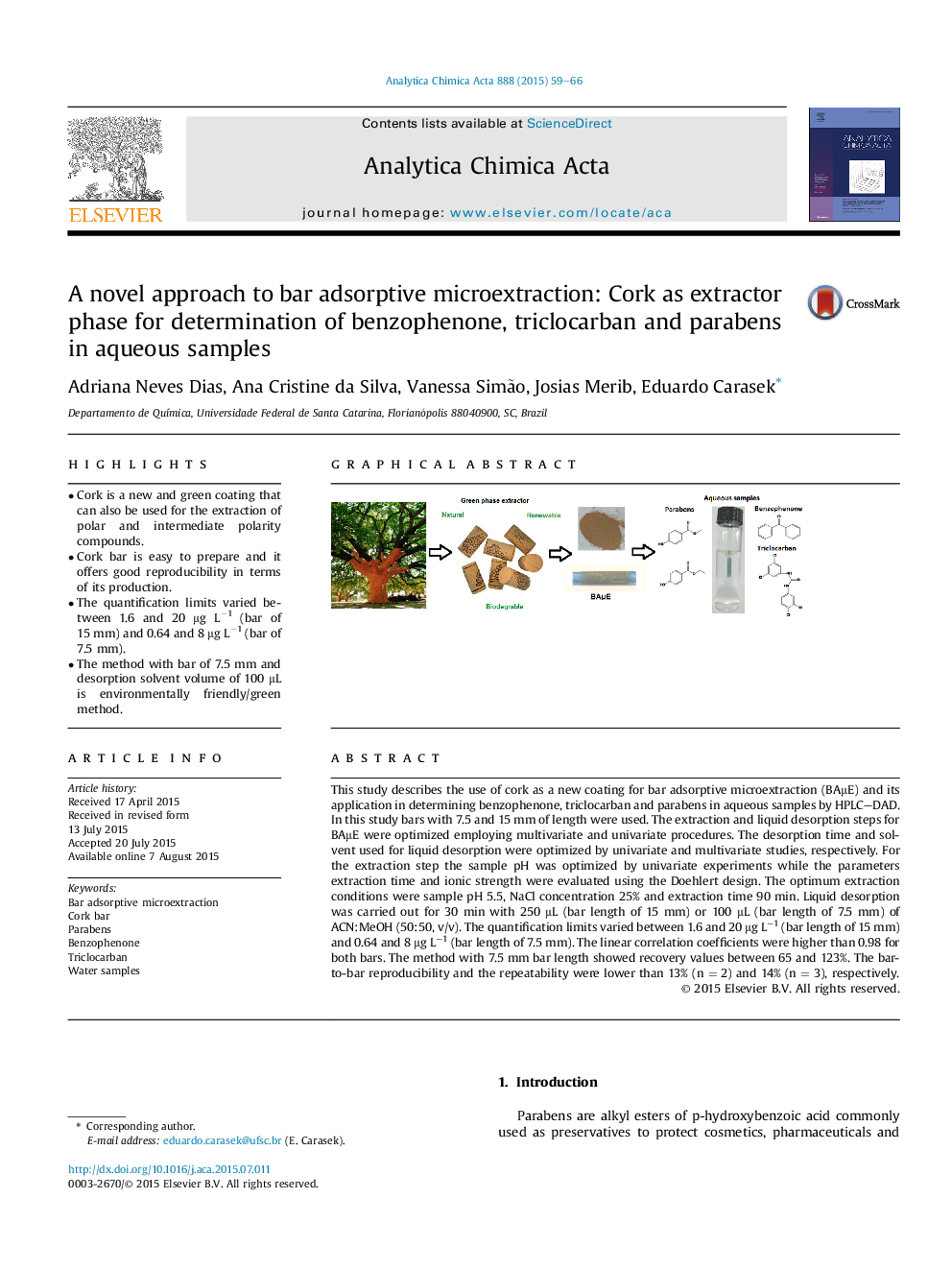| Article ID | Journal | Published Year | Pages | File Type |
|---|---|---|---|---|
| 1163606 | Analytica Chimica Acta | 2015 | 8 Pages |
•Cork is a new and green coating that can also be used for the extraction of polar and intermediate polarity compounds.•Cork bar is easy to prepare and it offers good reproducibility in terms of its production.•The quantification limits varied between 1.6 and 20 μg L−1 (bar of 15 mm) and 0.64 and 8 μg L−1 (bar of 7.5 mm).•The method with bar of 7.5 mm and desorption solvent volume of 100 μL is environmentally friendly/green method.
This study describes the use of cork as a new coating for bar adsorptive microextraction (BAμE) and its application in determining benzophenone, triclocarban and parabens in aqueous samples by HPLC–DAD. In this study bars with 7.5 and 15 mm of length were used. The extraction and liquid desorption steps for BAμE were optimized employing multivariate and univariate procedures. The desorption time and solvent used for liquid desorption were optimized by univariate and multivariate studies, respectively. For the extraction step the sample pH was optimized by univariate experiments while the parameters extraction time and ionic strength were evaluated using the Doehlert design. The optimum extraction conditions were sample pH 5.5, NaCl concentration 25% and extraction time 90 min. Liquid desorption was carried out for 30 min with 250 μL (bar length of 15 mm) or 100 μL (bar length of 7.5 mm) of ACN:MeOH (50:50, v/v). The quantification limits varied between 1.6 and 20 μg L−1 (bar length of 15 mm) and 0.64 and 8 μg L−1 (bar length of 7.5 mm). The linear correlation coefficients were higher than 0.98 for both bars. The method with 7.5 mm bar length showed recovery values between 65 and 123%. The bar-to-bar reproducibility and the repeatability were lower than 13% (n = 2) and 14% (n = 3), respectively.
Graphical abstractFigure optionsDownload full-size imageDownload as PowerPoint slide
